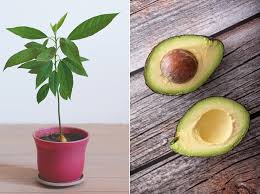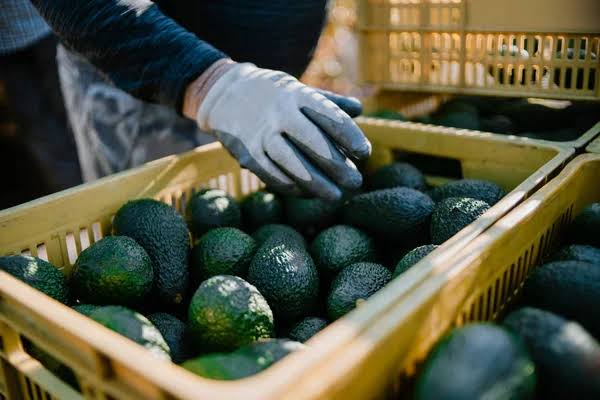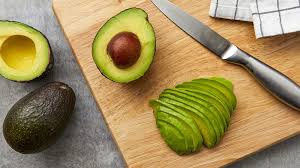Avocados, scientifically known as Persea americana, are remarkable fruits celebrated for their creamy texture and rich flavor. These green gems are not only delicious but also pack a nutritional punch, making them a favorite among health-conscious individuals.
Originating from Central and South America, avocados have become a global sensation, finding their way into a myriad of cuisines and gaining popularity for their versatility. The fruit’s unique buttery taste stems from its high content of monounsaturated fats, which are considered heart-healthy and contribute to a satisfying mouthfeel.
Aside from their delightful taste, avocados boast an impressive nutritional profile. They are a good source of essential vitamins and minerals, including vitamin K, vitamin E, vitamin C, and B-vitamins. Additionally, avocados are rich in potassium, which plays a crucial role in regulating blood pressure and supporting overall cardiovascular health.
One of the standout features of avocados is their high fiber content. Fiber is known for promoting digestive health and aiding in weight management by promoting a feeling of fullness. The presence of both soluble and insoluble fiber in avocados makes them a valuable addition to a balanced diet.
Moreover, avocados contain various antioxidants, such as lutein and zeaxanthin, which contribute to eye health. These antioxidants help protect the eyes from age-related macular degeneration and other vision-related issues.
In the culinary world, avocados have transcended traditional boundaries. From guacamole to avocado toast, these fruits lend themselves to a wide array of dishes. The smooth texture allows for easy spreading, making avocados a popular choice for sandwiches and wraps. Their neutral taste also pairs well with both savory and sweet dishes, providing a versatile ingredient for creative culinary endeavors.
The avocado’s rise to fame has extended beyond just being a tasty treat; it has become a symbol of wellness and a staple in many health-conscious diets. Its ability to enhance the flavor and nutritional content of meals while promoting a sense of indulgence has solidified its place in kitchens around the world.
Whether enjoyed on their own, blended into a smoothie, or incorporated into various recipes, avocados continue to captivate taste buds and contribute to a healthy, well-rounded lifestyle.
Read Also: Practical Feeding Guide for Goat Production
How to grow Avocados

Growing avocados can be a rewarding endeavor, and while it requires some patience, the process is relatively straightforward. Here’s a simplified guide on how to grow avocados:
1. Selecting the Avocado Seed: Begin by selecting a fresh, healthy avocado. Remove the seed (pit) carefully without damaging it.
2. Cleaning the Seed: Rinse the avocado seed under running water to remove any fruit residue. Be gentle to avoid damaging the seed’s protective skin.
3. Toothpick Method: Stick three to four toothpicks into the middle of the seed at even intervals, creating support for the seed to partially submerge in water.
4. Soaking the Seed: Suspend the seed over a glass or jar filled with water. The water should cover the bottom inch of the seed. Place the setup in a warm, sunny spot.
5. Waiting for Sprouting: Be patient and wait for the seed to split and produce roots. This can take several weeks. Change the water regularly to keep it fresh.
6. Transplanting to Soil: Once the roots are around 2-3 inches long, transplant the seed into a pot with well-draining soil. Leave the top half of the seed exposed.
7. Caring for the Avocado Plant: Avocado plants thrive in warm, sunny conditions. Ensure they receive plenty of sunlight. Water the plant regularly, allowing the soil to dry out between watering.
8. Providing Support: As the plant grows, you may need to provide support for its trunk using stakes. This helps prevent bending and encourages healthy growth.
9. Pruning and Shaping: Prune the plant to encourage a bushier growth. Pinch back the top leaves to promote lateral branching.
10. Patience is Key: Avocado trees take several years to mature and bear fruit, sometimes up to a decade. Be patient and continue providing proper care.
Growing avocados outdoors is ideal in regions with a warm climate, but they can also be grown as indoor plants in pots. Ensure the plant has enough space to grow, and consider the size of a mature avocado tree if planting it outdoors.
Remember, while growing avocados from seeds can be a fun and educational experience, the resulting tree may not produce fruit identical to the parent. For more consistent fruiting, consider purchasing a grafted avocado tree from a nursery.
How to Store Avocados

Storing avocados properly is essential to preserve their freshness and prevent them from ripening too quickly. Here’s a simple guide on how to store avocados:
1. Ripening Stage: If your avocados are unripe and you want to speed up the ripening process, place them in a paper bag with a banana or apple. These fruits release ethylene gas, which accelerates ripening.
2. Refrigeration: Once avocados reach the desired ripeness, you can slow down the process by storing them in the refrigerator. This is especially useful if you’re not planning to use them immediately. Refrigeration helps extend their shelf life.
3. Whole Avocado: If the avocado is whole and uncut, store it in the refrigerator. It can last for up to a week in the crisper drawer. Avoid placing unripe avocados in the fridge, as they won’t ripen properly at colder temperatures.
4. Cut Avocado – Pit In: If you’ve only used a portion of an avocado, leave the pit in the unused half. The pit helps reduce exposure to air, slowing down oxidation. Wrap the cut avocado tightly with plastic wrap or beeswax wrap.
5. Cut Avocado – Citrus Juice: Squeeze a bit of citrus juice (lemon or lime) over the exposed flesh of a cut avocado. The acidity helps prevent browning. Wrap the avocado in plastic wrap or place it in an airtight container.
6. Plastic Wrap: For both whole and cut avocados, wrapping them tightly in plastic wrap helps minimize air exposure, reducing the likelihood of browning.
7. Store with Onion: Some people find success by storing a cut avocado with a slice of onion. The sulfur compounds in onions can help slow down oxidation.
8. Avocado Keeper: Consider using a specialized avocado keeper, which is a container designed to reduce air exposure and keep avocados fresh. These containers often have a section for storing the pit.
9. Temperature Awareness: Keep avocados away from extreme temperatures. Avoid exposing them to direct sunlight, as this can accelerate ripening.
Read Also: Feeding and Grazing Behaviour of Goats
How to Cut Avocados

Cutting avocados is a straightforward process, and here’s a simple guide to help you do it:
1. Gather Your Tools: You’ll need a sharp knife and a cutting board. Make sure the knife is sturdy enough to cut through the avocado but also be careful with its sharpness.
2. Wash the Avocado: Before cutting, wash the avocado to remove any dirt or contaminants on the skin.
3. Cut Lengthwise: Hold the avocado securely on the cutting board. With the knife, cut lengthwise around the avocado, starting from the top (where the stem was attached). Rotate the avocado while keeping the knife steady, and cut until you reach the starting point.
4. Twist and Separate: Hold the avocado halves, and gently twist them in opposite directions to separate them. One half will have the pit, and the other will be pit-free.
5. Remove the Pit: To remove the pit from the side with the pit, you have a few options:
Tap and Twist: Gently tap the knife blade into the pit, twist the knife slightly, and the pit should come out. Scoop with a Spoon: Hold the avocado half in one hand and, using a spoon, carefully scoop out the pit.
6. Peel or Score the Flesh: To peel the skin off the avocado, use your fingers to gently separate the skin from the flesh. Alternatively, if you plan to slice or dice the avocado, keep it in the skin and use a knife to score the flesh while being careful not to cut through the skin.
7. Dice or Slice: If you’ve scored the flesh while it’s still in the skin, you can use a spoon to scoop out the diced or sliced avocado. If the avocado is peeled, place it on the cutting board and proceed to slice or dice as desired.
8. Lemon or Lime Juice (Optional): If you’re not using the avocado immediately and want to prevent browning, consider squeezing a bit of lemon or lime juice over the cut surfaces. The citric acid helps slow down oxidation.
9. Dispose of the Pit Safely: Dispose of the pit carefully to avoid accidents. Some people choose to compost avocado pits.
Remember to be cautious while handling the knife, especially when removing the pit. With practice, cutting avocados will become a quick and efficient task.
Read Also: 5 Early Symptoms of Tooth Decay and their Methods of Prevention
